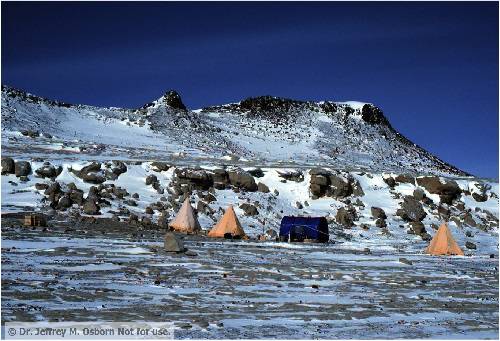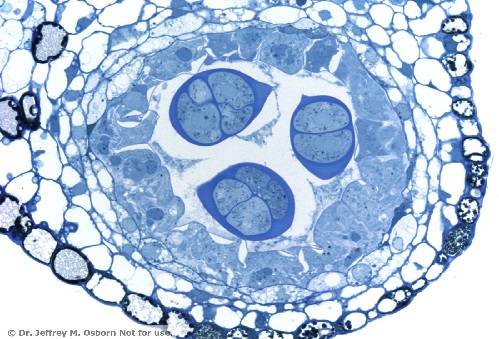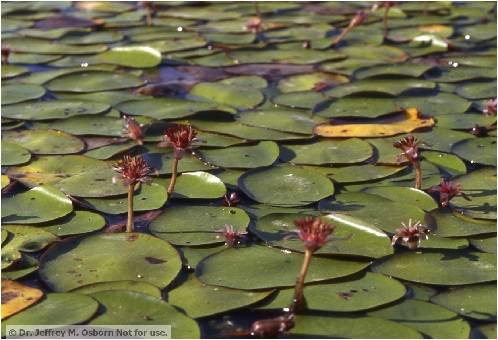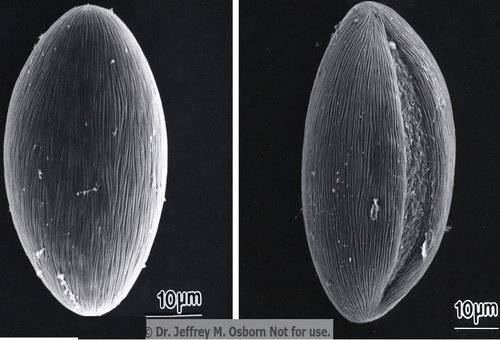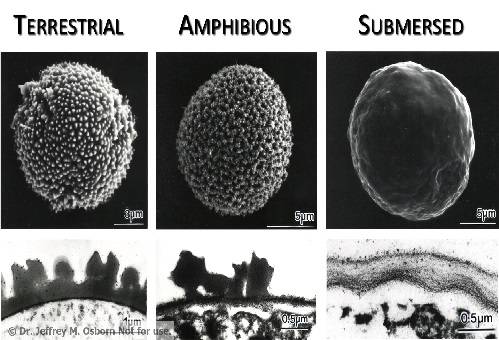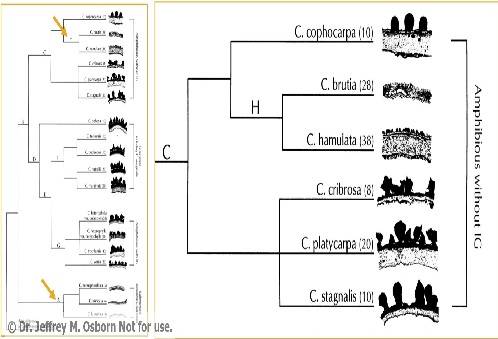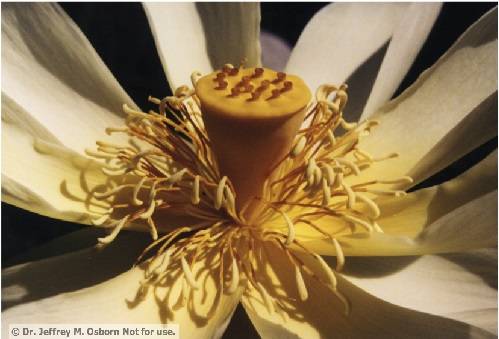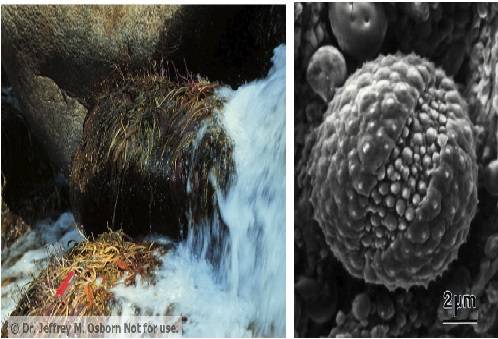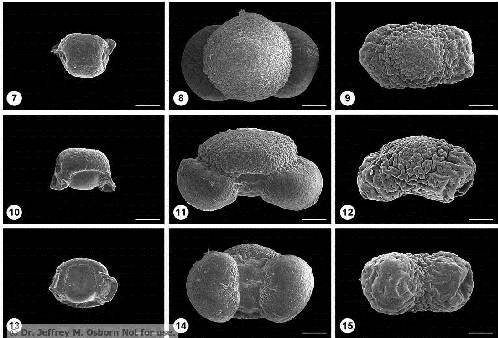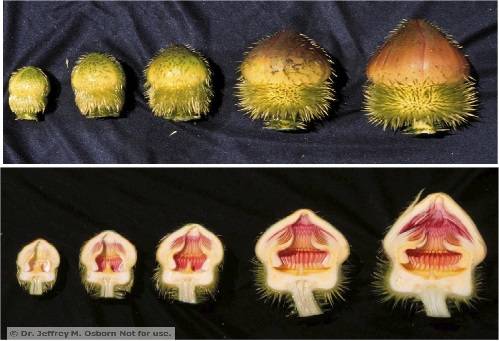Project Topics / Abstracts:
“Pine pollen cones from the Middle Eocene of British Columbia, Canada”
Anatomically preserved pollen cones are described from the Middle Eocene Princeton chert of British Columbia, Canada. Cones are ellipsoidal, range from 2.8-6.9 mm in length, 1.6-3.5 mm in diameter, and are often subtended by scale leaves. Cone axes contain longitudinally oriented, cortical resin canals and 14-18 vascular bundles. Microsporophylls are helically arranged, each bearing two abaxial pollen sacs, many containing pollen grains. Grains are bisaccate and monosulcate, ranging from 50-70 µm in length and 27-43 µm in width. Proximally, the corpus is rugulate with a tectate-alveolate infrastructure. Sacci have a well-defined endoreticulum and an external ornamentation that is psilate to scabrate. Variations in cone size, cone anatomy, and pollen morphology indicate that several developmental stages are preserved. The large number of cones present in the chert, especially those representing short-lived ontogenetic stages, and the preservational quality of the cones support depositional interpretations for a rapid burial and preservation. These factors also indicate that the pollen cone producing plants occupied a marginal position in close proximity to the lacustrine environment. Four species of Pinus, based on woody twigs, dwarf shoots, leaves, and ovulate cones, are presently known from the Princeton chert. The association of these pollen cones with P. similkameenensis leaves and P. arnoldii ovulate cones indicates possible taxonomic affinities among these species. The Princeton chert specimens are the oldest Pinus pollen cones to be described and are the first in the genus for which fossil pollen ultrastructure has been described.
“Structurally preserved spenophytes from the Triassic of Antarctica: Reproductive remains of Spaciinodum“
Permineralized cones found organically attached to Spaciinodum collinsonii stems are described from the early Middle Triassic silicified flora from the Fremouw Formation of Antarctica, and the species diagnosis is emended to include the reproductive specimens. The apical cones are organized into internodal and leaf-bearing nodal regions. Nodal septations span the central pith and cortex, and thin fimbrils subdivide the internodal areas into smaller chambers. The vascular system consists of 31-33 continuous bundles that do not alternate in position between successive nodes and internodes. Simple sporangia are associated with the coritcal chambers and occur in one whorl on the axis. Spores are small, alck elaters, and have no discernible ultrastructure preserved, and they are interpreted to be immature. The Antarctic cones are different in structure form typical cones of modern and fossil members of Equisetales; however, they share similarities with some morphologically aberrant cones of extant Equisetum and several Late Paleozoic and Mesozoic compression-impression fossils. Spaciinodum is now the most complete anatomically described Mesozoic sphenophyte.
Publications:
-
Phipps, C. J., J. M. Osborn, and R. A. Stockey. 1995. Pinus pollen cones from the Middle Eocene Princeton chert (Allenby Formation) of British Columbia, Canada. International Journal of Plant Sciences 156: 117-124. Article (PDF)
-
Osborn, J. M., C. J. Phipps, T. N. Taylor, and E. L. Taylor. 2000. Structurally preserved sphenophytes from the Triassic of Antarctica: Reproductive remains of Spaciinodum. Review of Palaeobotany and Palynology 111: 225-235. Article (PDF)
Presentations:
1992
- Truman Undergraduate Research Symposium (Kirksville, MO)
1993
- Missouri Academy of Science (Kansas City, MO)
- Truman Undergraduate Research Symposium (Kirksville, MO)
1994
- National Conference on Undergraduate Research (Kalamazoo, MI)
- Truman Undergraduate Research Symposium (Kirksville, MO)
- Tri-Beta Biological Honor Society Regional Meeting (Steelville, MO)
- Sigma Xi Student Research Symposium (Kirksville, MO)
1996
- 5th International Palaeobotanical Conference (Santa Barbara, CA)


